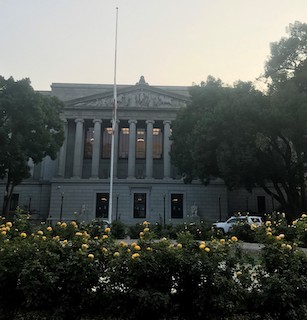The following article presents a relatively simple message, but one that our readers often struggle to understand. Apparently, the Sacramento County Superior Court judge at issue (whose name we will not share) did, too.
The Gist of this Article: A “Franklin Hearing” is not resentencing. It is an opportunity to add material to defendant’s file that explains defendant’s youthfulness at the time of the crime and the impact of youthfulness on defendant’s commission of the crime. Such material is added to the file to help a youth offender parole board better understand defendant’s culpability, rehabilitation and suitability for parole.
In 2011, when he was eighteen years old, Allen Benzler killed another person. The prosecution charged Benzler with one count of murder (Penal Code § 187) and one count of assault with a firearm (Penal Code § 245), as well as the personal firearm use enhancement (Penal Code § 12022.5) and a criminal street gang enhancement (Penal Code § 186.22(b)(1)(C)) as to both counts.
The jury found Benzler guilty of the assault with a firearm count and found true both enhancements as to that count, but found him not guilty of first degree murder and deadlocked on the lesser included offense of second degree murder. Benzler then pled to voluntary manslaughter (Penal Code § 192) and admitted the personal firearm use enhancement. The judge sentenced him to 17 years and four months.
By the time of sentencing in 2014, Benzler was 21 years old. At sentencing, he did not offer any evidence related to his age or its impact on his culpability.
In 2016, the California Supreme Court issued its ruling in People v. Franklin (2016) 63 Cal. 4th 261. In Franklin, a sixteen-year old defendant was convicted of murder with a firearm enhancement and received the statutorily mandated sentence of life in prison with the possibility of parole in 50 years. Franklin, supra, at 268.
 Court of Appeal Third Appellate District Sacramento
Court of Appeal Third Appellate District Sacramento
Franklin then appealed his conviction and his sentence on several grounds, one being that the sentence constituted cruel and unusual punishment under the Eighth Amendment due to his youthfulness. The California Supreme Court, in response, found that Senate Bill 260 granted Mr. Franklin a youth offender parole hearing during his twenty-fifth year in prison, which mooted his Eighth Amendment challenge to his sentence. The California Supreme Court then went further and remanded the case to the trial court “for a determination of whether Franklin was afforded sufficient opportunity to make a record of information relevant to his eventual youth offender parole hearing.” Id., at 284. The hearing wherein this determination was to be made has since been called a Franklin hearing.
In 2020, Mr. Benzler filed a “Motion for Franklin Hearing” in the trial court, under the original caption and case number, seeking a Franklin hearing under Penal Code § 1203.01 and citing to In re Cook (2019) 7 Cal. 5th 439. The motion listed the prosecution’s allegations against him, his age at the time of the offenses and his birthdate. The motion further explained the legislative changes allowing for youth offender parole hearings and the later expansion of those hearings to offenders under the age of 26 years. The motion concluded by stating Benzler is a youth offender and is entitled to a Franklin hearing to “place on the record any documents, evaluations, [and] testimony (subject to cross-examination) that may be relevant at his eventual youth offender parole hearing.”
The trial court judge, Michael A. Savage, denied the motion in a short check-box order. The order did not provide any explanation for the denial.
Benzler then appealed the denial to the Third Appellate District Court in Sacramento.
Benzler argued that, as an offender who committed his offense when he was 18 years old, he will be eligible for a youth offender parole hearing during his fifteenth year of incarceration under Penal Code § 3051. Furthermore, because his sentencing hearing occurred nearly two years before the ruling in Franklin, he did not have a “meaningful chance” to place on the record any evidence relevant to his “youth-related factors” for use in a later parole board hearing. Thus, the matter should be remanded so the trial court may consider whether he “was afforded a sufficient opportunity” to put such evidence on the record.
The Third Appellate District agreed with Benzler that the trial court judge had made a mistake in denying Benzler’s “Franklin motion.” The Third Appellate District was puzzled by the trial court judge’s ruling in denying the motion and nonetheless explained why Benzler was entitled to such a hearing and stating that Benzler’s motion met the initial requirements for eligibility.
We present this rather simple summary to just exemplify for the reader what is required in the initial request for a Franklin evidence preservation proceeding.
The citation for the Third Appellate District Court ruling discussed above is People v. Allen Benzler (3rd App. Dist., 2021) 72 Cal. App. 5th 743, 287 Cal. Rptr. 3d 588.
For more information about the Franklin evidence preservation process, please click on the following articles:
 Court of Appeal Third Appellate District Sacramento
Court of Appeal Third Appellate District Sacramento